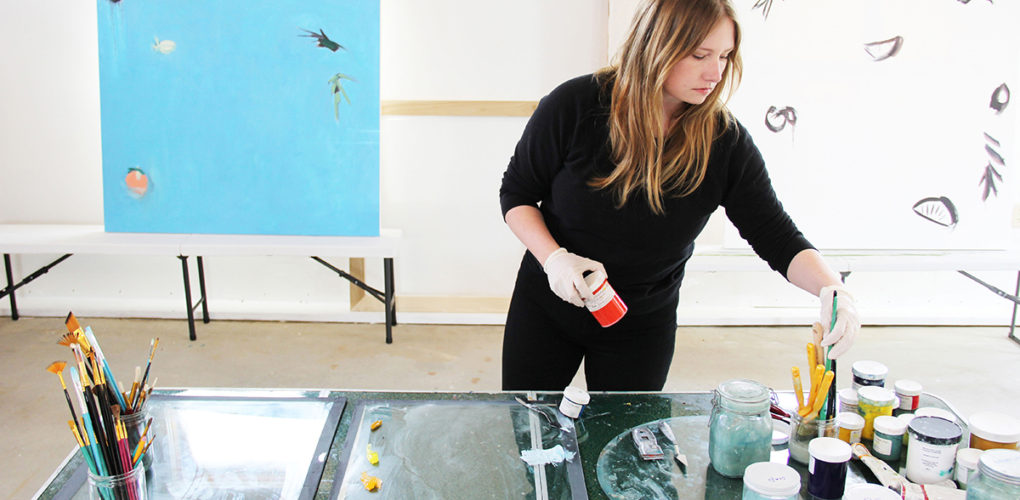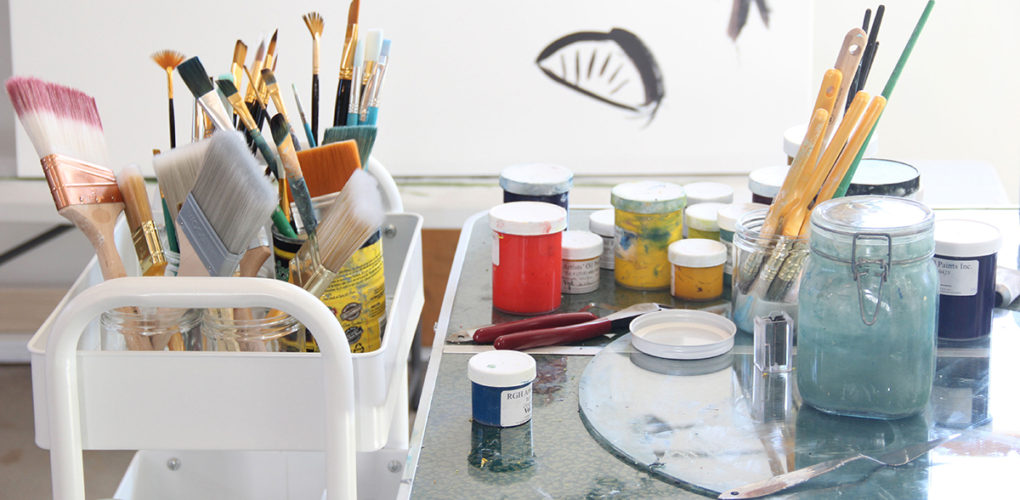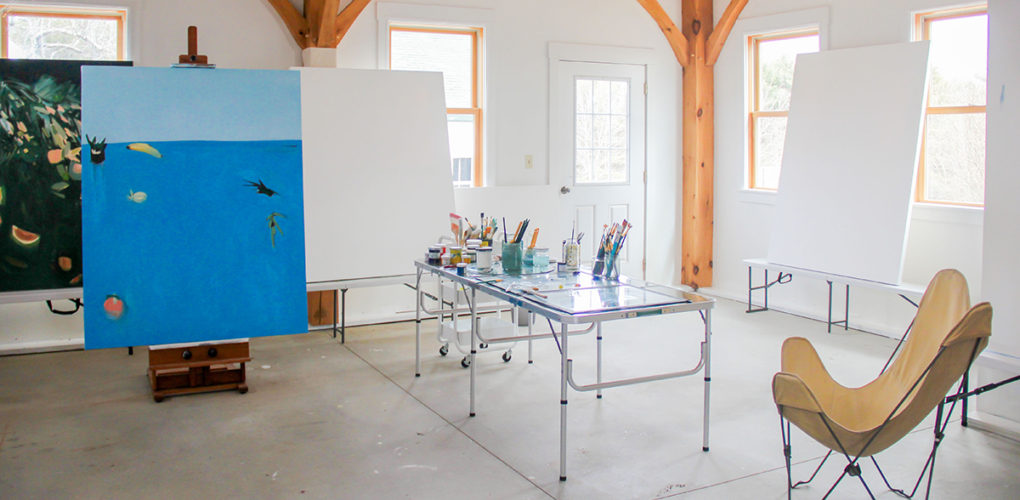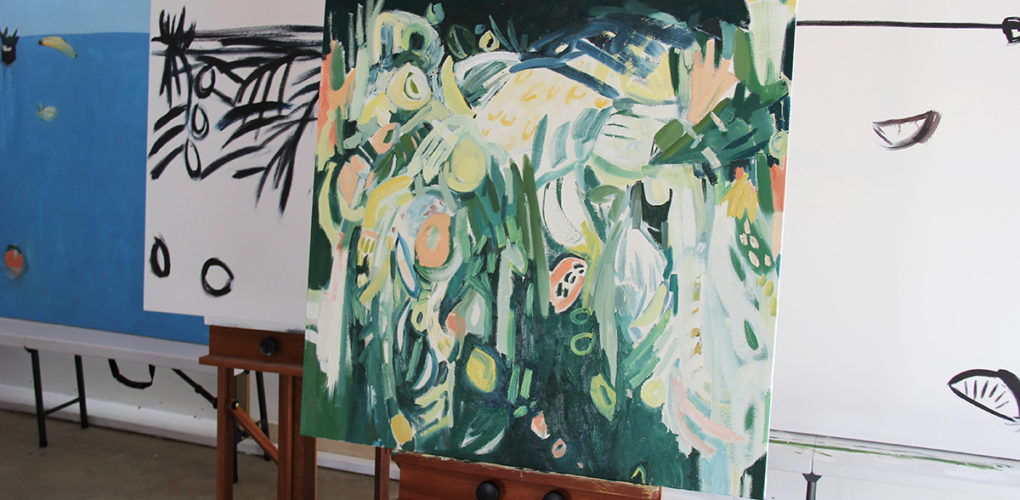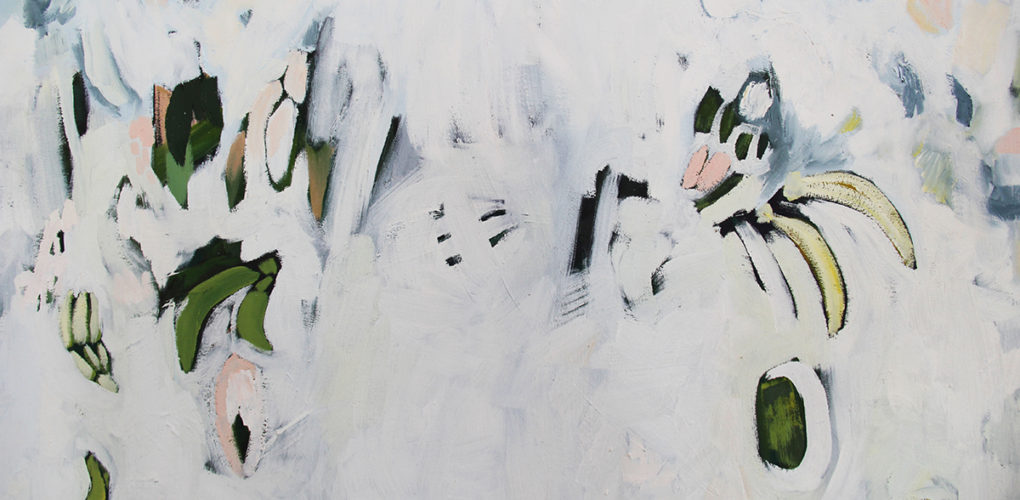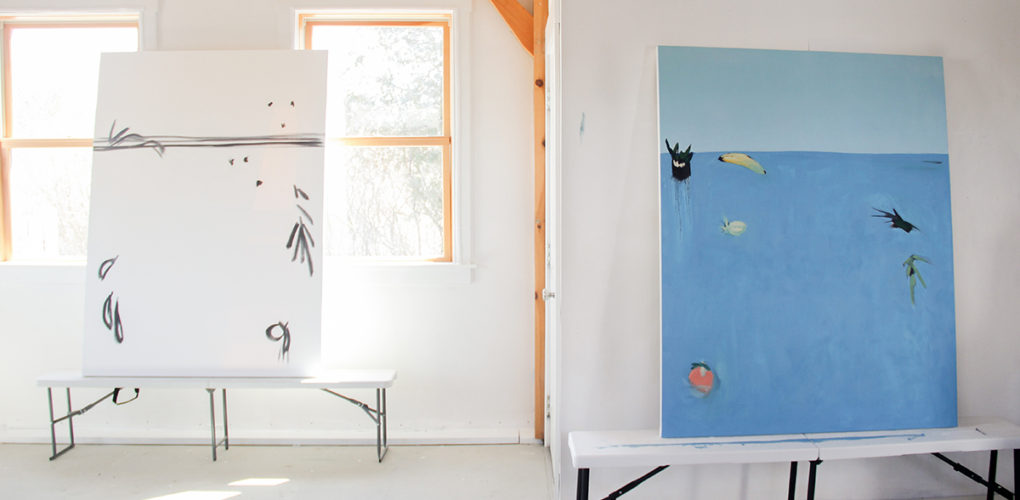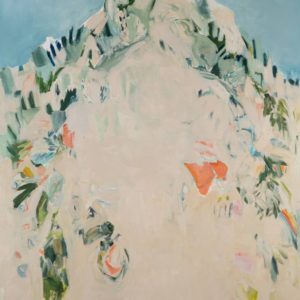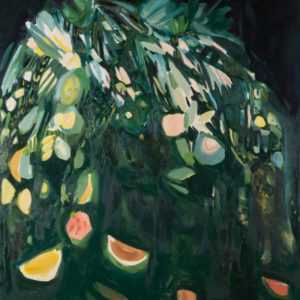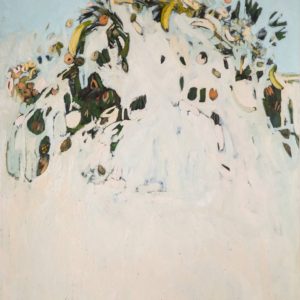One to Watch
 Hannah Secord Wade Creates Layered, Meaningful Landscapes
Hannah Secord Wade Creates Layered, Meaningful Landscapes
Hannah Secord Wade’s paintings center on landscapes, stemming from themes of fear, frustration, and a lack of control over her surroundings. Her current project, titled Everything All Together, depicts a series of mountainous piles of vegetation and debris, each in a different state of disarray. Her most recent works show these mounds as they are cleared away, after which she will start the process over again. Hannah works with oil as the medium allows her more freedom for the works to grow and she works on them over the course of a few months.
Hannah received a MA Fine Art from Chelsea College in London and a BA in Visual Culture from Hampshire College in Amherst, Massachusetts. She participated in an artist’s residency at Arteles, Finland in 2016 and has shown her works in Finland, France, England, and the United States. Hannah has been featured in publications including The Vanderbild, Booooooom!, and Art Slant.
What are the major themes you pursue in your work?
My work has centered on landscape for the past ten years, and the recurring themes are fear, frustration, and a lack of control over my surroundings. My current project, Everything All Together, shows a series of movements as land is piled up, and then cleared away. The piles function as a hoard, with plants and debris gathered and contained in one place. The pieces I’m currently working on will complete the action by washing the mounds away, and then the cycle will begin again.
How did you first get interested in your medium, and what draws you to it specifically?
I became interested in painting at a young age, primarily through seeing artworks reproduced in books. Growing up on a farm in a rural area meant that I didn’t have a lot of access to galleries or museums, so reading was how I connected to art.
I gravitate towards painting because I like the immediacy and physicality of the medium. I sometimes use other types of paint for a different effect, but I prefer oil because I feel it allows more freedom for the works to mutate and grow. Many of my pieces take multiple layers applied over months, and when you are working with oil paint you have the ability to change everything as long as you have patience.
How has your style and practice changed over the years?
When I was younger I would paint from life or photographs, and now my work is almost entirely from imagination. This has allowed me to loosen up my interpretation of objects, and work with paint in new ways. I think of my work now as representation being eaten by abstraction.
Can you walk us through your process? Do you begin with a sketch, or do you just jump in? How long do you spend on one work? How do you know when it is finished?
I do keep a sketchbook, and my works go through a series of changes before they end up on canvas. Once I’m ready to begin a painting I start with a general idea of the composition, and draw a very basic under painting. From there I follow the paint, keeping the marks that are interesting, and building off of them layer by layer. I never know exactly how a particular painting will turn out, so for me it is important to take the time to sit and look at a piece, sometimes over the course of many days. Knowing when a painting is finished hard to describe, but at a certain point a work feels like it is balanced and whole. Some paintings are completed in a few weeks, while some take over a year.
What are some of your favorite experiences as an artist?
As a painter my work is very solitary, so I value the times when I have the chance to connect with other artists. I recently completed a residency at Arteles Creative Center in Finland, and having the opportunity to live and work with artists from around the world was both inspiring, and humbling. One of the great things about being an artist is that you have the chance to meet new people, and learn about their projects firsthand. Artists tend to be good collaborators, so when you are with a group there is often a lot of cooperation and participation. I’m always impressed by the thoughtfulness and generosity that I’ve seen, and I feel grateful that I get to be a part of that world.
What was the best advice given to you as an artist?
One of my professors would use the old saying that “talent and a dollar will get you a cup of coffee,” and it has always stuck with me. I interpret it in two ways, and both have been helpful. The first is that artists are responsible for getting their art out into the world, and they have to be ready to do the work. The second is that you can’t rely on technical skills or prettiness to make your art interesting. It is the thought and the struggle behind a work that people respond to, and viewers can tell where the time has been put in. I use this as a reminder to always question myself, and to push my practice.
